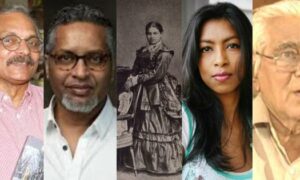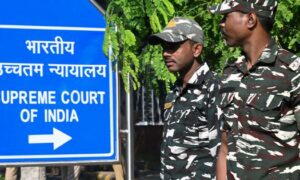
The main obstacle to the Company’s expansionist drive in southern India was the kingdom of Mysore. For Charles Cornwallis, success in an operation to check Tipu’s power might salvage his military reputation, which had been seriously damaged due to the failure in America. Ever since the signing of the Treaty of Mangalore – the terms of which had not at all been satisfactory for the British – the EIC had been looking for an opportunity to undo the outcome of the Second Anglo–Mysore War. The British would seize any chance to unleash another war. Cornwallis, in his correspondence between 1786 and 1790, repeatedly urges the officers posted in the south to be alert to even the slightest transgression by Mysore. This would justify the resumption of hostilities. Tipu’s dispute with the kingdom of Travancore in southern Kerala provided the pretext.
In the mid-1760s, Haidar Ali had absorbed northern and central Kerala (Malabar), with their numerous petty-chieftaincies, into the kingdom of Mysore. Besides, the small but strategically located principality of Cochin had agreed to render an annual tribute to the kingdom. With these acquisitions, Mysore had also gained access to the sea.
During the Second Anglo–Mysore War, the EIC had endeavoured to prevent Mysore from acquiring a dominant position in Kerala. It had actively supported its ally, the ruler of Travancore, in resisting Tipu’s inroads into the kingdom.
The involvement of Mysore in the military conflicts of Kerala had a long history, which was largely the outcome of upheavals within Kerala triggered by attempts of regional powers, such as Calicut, to expand their territories. For instance, the incursions of Calicut into the chiefdom of Palakkad (Palghat) had prompted the ruler of Palakkad to appeal to Mysore for assistance in resisting these inroads in 1732 and again in 1735. Relations between Mysore and Palakkad deteriorated in the 1740s, with frequent raids by Mysore into Palakkad. The situation altered in the late 1750s, when the Calicut army invaded the chiefdom. Palakkad sustained heavy casualties in the fighting, and the ruler again appealed to Mysore.
The dalavai (hereditary commander-in-chief) of Mysore deputed Haidar Ali, then the military commander of Dindigul (in present-day Tamil Nadu), to deal with the invading Calicut army. The dalavai, was the de facto ruler of the Mysore kingdom. He was subsequently ejected by Haidar Ali, who became the de facto ruler of Mysore in 1761. In 1757, Haidar Ali intervened in the fight between Palakkad and Calicut, on the side of the Palakkad chief. The Calicut army was forced to retreat. This intervention marked the beginning of his involvement in the politics of Malabar, culminating in 1766 in the annexation of northern Kerala. The rulers of Palakkad and Kannur (Cannanore) were his main allies during the 1766 campaign.
In the wake of Haidar Ali’s offensive, many of the dispossessed chiefs of the region, along with their retinues, sought refuge in Travancore. Travancore itself had emerged as a powerful regional kingdom quite recently. The shelter provided by Travancore to these displaced ruling families became a factor in the Second and Third Anglo–Mysore Wars. Travancore was inescapably drawn into a conflict with Mysore.
Travancore and the EIC had together striven in several ways to undermine the control of Mysore over Malabar since the late 1760s. Cornwallis now decided to force the issue so that the British could subjugate Malabar and enhance their influence over Travancore.
There was one other major cause of friction between Mysore and Travancore which contributed to the breakdown in their relations after the Second Anglo–Mysore War. This was a dispute over fortifications on the northern borders of Travancore. The extension of these fortifications by the ruler of the kingdom was strongly opposed by Mysore.
On the Travancore frontier, there was a line of fortifications called nedumkotta in Malayalam, which had been constructed over several years from the mid-1760s onwards to strengthen the defences of the northern border. The construction of the nedumkotta lines had been linked to a perceived threat from Mysore, though the plan for their construction was conceived much earlier. The enlargement of the fortifications by extending them into Cochin was objected to by Tipu. This resulted in a military confrontation lasting for several months, from the end of 1789 to May 1790.
This was the prelude to the Third Anglo–Mysore War (1789–92), and provided the excuse Cornwallis had been looking for. It is obvious that many of the actions of the Travancore ruler, at the behest of the EIC, were intended to escalate tensions.
In the ensuing war, the Marathas and the nizam of Hyderabad were allies of the Company. Tipu had to fight simultaneously on several fronts: the Marathas and the nizam in the north, the British in the east, and a hostile Travancore in the rear. At one point, he was successful in cornering Cornwallis on the outskirts of his capital Seringapatam (Srirangapatna), in May 1791. Cornwallis had led his troops from Bangalore to the outskirts of Seringapatam with the aim of capturing Tipu’s capital. Bangalore had been taken from Mysore a few months earlier. The expedition was a failure, and Cornwallis was forced to order his troops to retreat. Much of the heavy equipment carried by the British had to be destroyed before the retreat commenced.
The news was received in Britain with much derision, the more so as it confirmed the low regard that the public in Britain had for the military abilities of the commander who surrendered at Yorktown. At least two popular satirical prints mocking Cornwallis’s retreat were published in 1791, one of them by the famous political cartoonist James Gillray, which bore the title “The Coming-On of the Monsoons; or, the Retreat from Seringapatam”, and the other “How to gain a compleat victory, and say, you got safe out of the enemy’s reach” by the Scottish caricaturist Isaac Cruikshank. Gillray’s brutal cartoon depicts Tipu standing behind the battlements of his fortress and urinating with all his might on British soldiers in flight, while Cornwallis flees on a mule.
British troops reappeared outside Seringapatam eight months later, along with their friends: Hyderabad and the Marathas. Mysore was unable to withstand the combined offensive of the joint force. Tipu eventually made a peace offer, leading to the signing of the Treaty of Seringapatam by which Mysore had to cede nearly half its territory to the British, the nizam, and the Marathas. The Company’s acquisitions included Salem, Dindigul, and Malabar; and the kingdom of Coorg came under British ‘protection’. A massive indemnity, amounting to 3.30 crore rupees (almost equal to the annual revenue of Bengal, Bihar, and Orissa), was imposed on the kingdom. Further, “Two of Tippoo Sultan’s three eldest sons [were] to be given as hostages for a due performance of the treaty”.
The handing over of two of Tipu’s sons – the ten-year-old Abdul Khaliq and the eight-year-old Muiz-ud-din, to the governor-general became a familiar theme in colonial commemorative art at the close of the century. Fourteen years later, Muiz-ud-din, now in his early twenties and living in confinement in Vellore, to which the slain Tipu’s family had been exiled, was among those who provided ‘direct encouragement’ for a major mutiny in the EIC’s army in 1806.
Tipu was killed in 1799 while fighting in the Fourth Anglo–Mysore War. Following the suppression of the mutiny, Muizud-din was incarcerated in Calcutta jail, while other members of the family were transported to a village on the outskirts of Calcutta. Muiz-ud-din remained in prison for several years. The story of his long captivity is little known. The popular perception in Seringapatam today is that Tipu’s sons “were taken away and secretly killed. They all became martyrs”. Discussing this tragedy, Partha Chatterjee remarks that, “exile a thousand miles away was, after all, little else but death”.
The hostages figure prominently in contemporary art, reflecting an obsession with Tipu Sultan in popular British imagination, which was to continue for a long time. The Tipu theme begins to appear in artworks from the early 1790s.
Excerpted with permission from Governors of Empire: The East India Company’s Chief Functionaries in India, Amar Farooqui, Aleph Book Company.
📰 Crime Today News is proudly sponsored by DRYFRUIT & CO – A Brand by eFabby Global LLC
Design & Developed by Yes Mom Hosting






